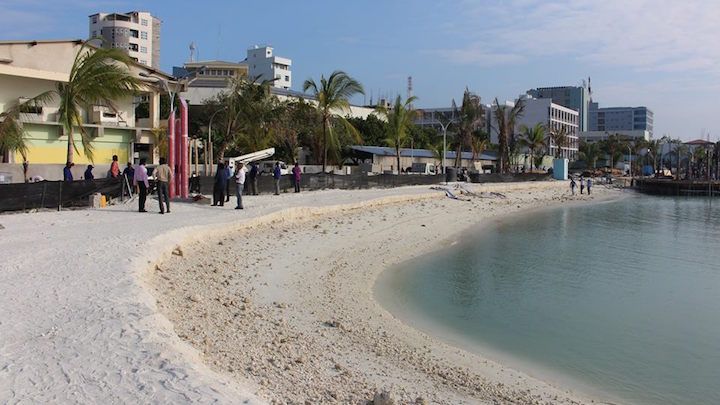New artificial beach is a ‘health hazard,’ says youth group
The Dhi Youth Movement has warned that sewage outflow and medical waste from the nearby Indira Gandhi Memorial Hospital disposed near the new west coast artificial beach pose serious dangers to swimmers. A snorkelling team from its cleanup project Damage Control had found an increase in sedimentation and dead corals as well as tubes and medical waste.

24 Jan 2016, 9:00 AM
A local youth group has warned of health hazards to members of the public who will be using the new artificial beach due to open in Malé’s western waterfront this week.
The Dhi Youth Movement said in a statement yesterday that sewage outflow from pipes in the area and medical waste from the nearby Indira Gandhi Memorial Hospital pose serious dangers to swimmers.
DYM said that a snorkelling team from its cleanup project Damage Control had found an increase in sedimentation and dead corals since construction began. The biggest damage to the surrounding reef is caused by sewage pipes and garbage dumped into the sea, the NGO said.
“It is clear that because of the problems with the waste management system, medical waste from the hospital and disposable items are being dumped to the sea,” DYM said.
Become a member
Get full access to our archive and personalise your experience.
Already a member?
Discussion
No comments yet. Be the first to share your thoughts!
No comments yet. Be the first to join the conversation!
Join the Conversation
Sign in to share your thoughts under an alias and take part in the discussion. Independent journalism thrives on open, respectful debate — your voice matters.




